Keeping your saucepans in the oven is a sure sign that you have storage problems in your kitchen. But Aoife Greene knew for a while that her family of four had outgrown their terraced house in Rathfarnham in Co Dublin.
“We couldn’t all fit around the table without moving something,” she recalls. “And you couldn’t open the main cupboard without moving a chair.”
She and her husband, Stephen O’Brien, bought the former corporation house on Loreto Row in 2005, thinking they would move to a bigger house when their children came along. Two children did come along, but so too did the financial crash. The dream of moving to a bigger house in the neighbourhood receded, and they started thinking about the potential of their three-bedroomed home. “It was a lovely little house, and we always loved the atmosphere in it,” she says.
When their children were 10 and eight, they decided to bite the bullet and did an online search for architects who had renovated corporation houses like theirs. They found Ciara Murray of Newmark Architects. “We wanted someone to be realistic about what we could do with two kids and a dog in a small, terraced house and we really liked her ideas,” Greene says. Before they could do anything, Covid-19 struck.
READ MORE
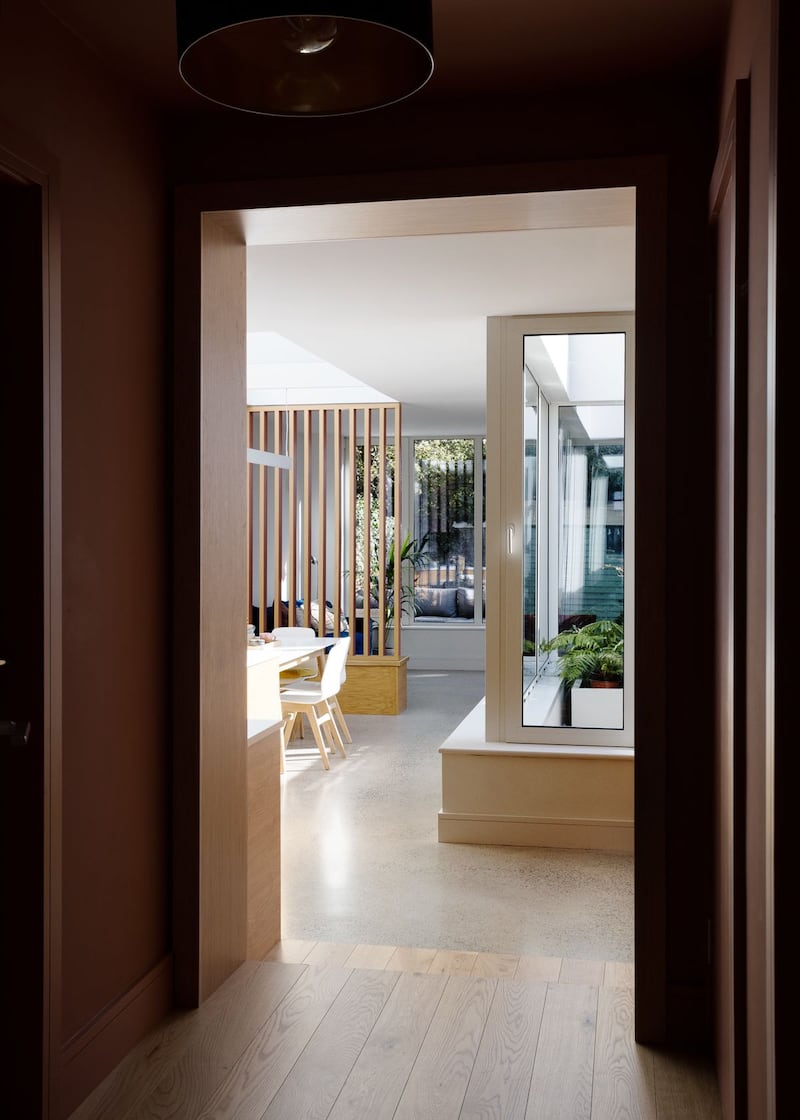
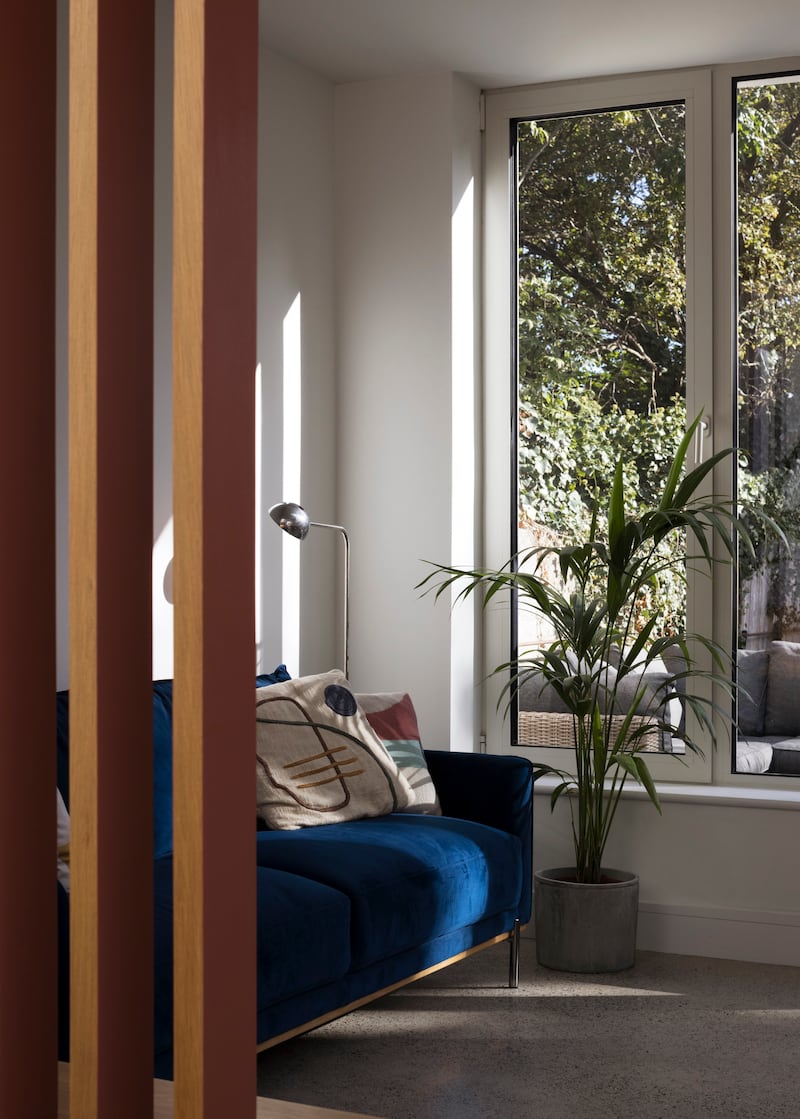
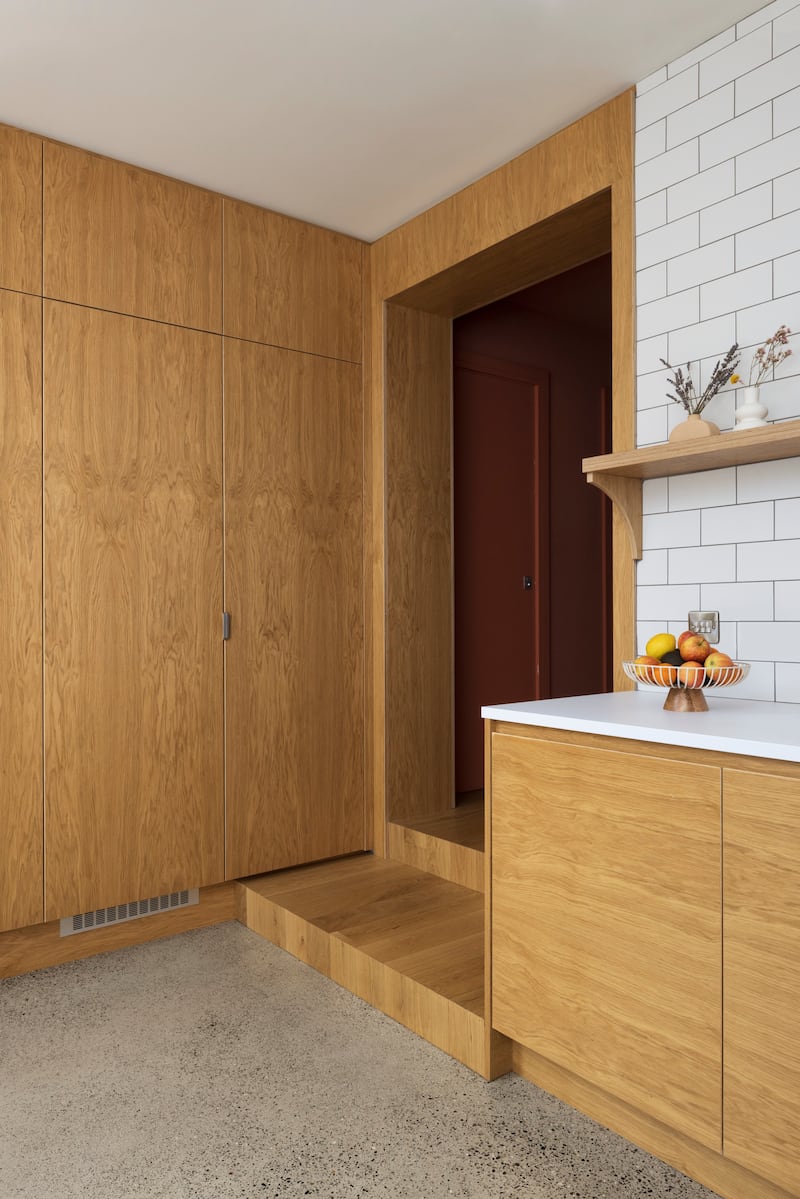
But O’Brien says the hiatus was helpful because it gave them more time to look at plans and 3D images and tweak them to suit their needs. Their needs were simple – more living space downstairs, more storage space, and a downstairs toilet.
The house was 79sq m and just 5.5 metres wide, but they were fortunate to have a garden that was more than 18 metres long, so they planned an extension into the garden.
Ciara Murray says these former corporation houses are interesting projects to work on. “They are a huge part of the Irish housing stock,” she says. While they are generally small for family living, especially the kitchen and dining space, “they very often have the advantage of generous-size gardens, giving them much potential. I also like that we can take the standard house and make it into something interesting with good design.”
From the outside, the property still looks like a typical 1940s/50s terraced house. But when you open the front door, your eye travels through the hall, through the glass-framed courtyard and right into the back garden. The 39.5sq m extension feels spacious, thanks to all the hidden storage space behind the floor-to-ceiling doors. The original kitchen became a large utility room and downstairs toilet. Beyond it, a threshold area separates the old part of the house from the new. It is finished in a deep terracotta colour, which initially surprised Greene. “We were always told to use bright colours in small spaces so I would never have thought of terracotta, but it really works well,” she says. It leads into the dining area of the light-filled extension.
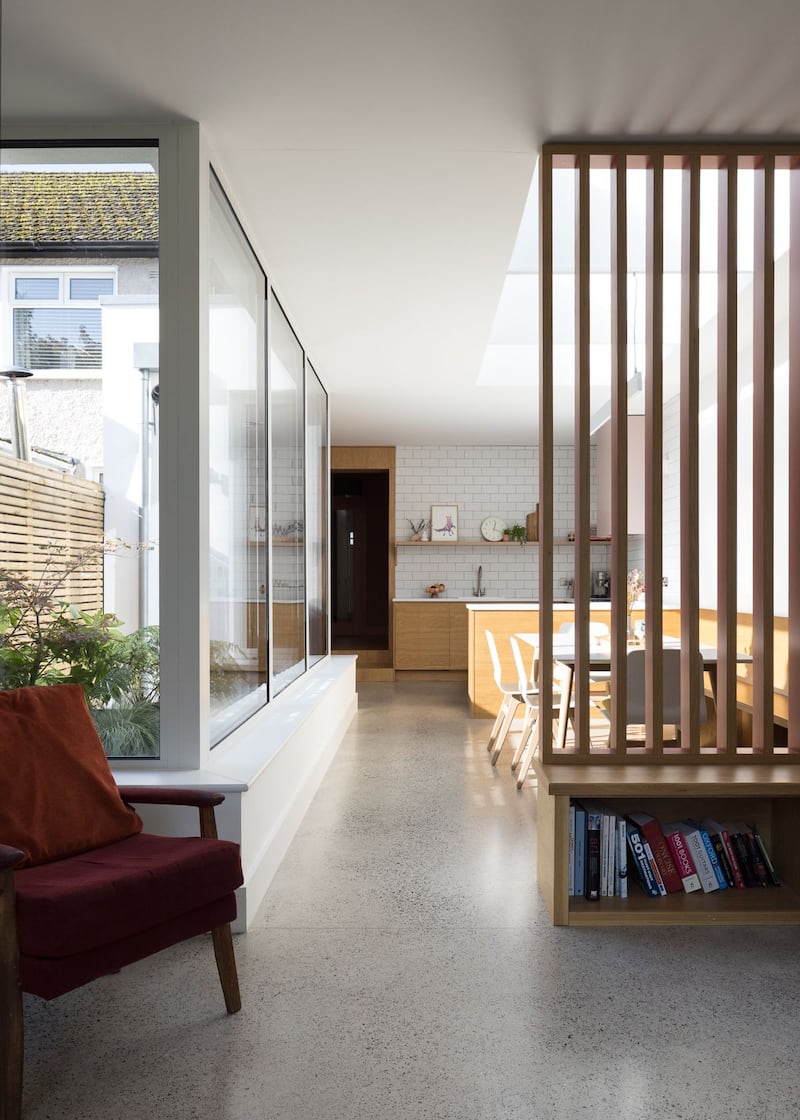
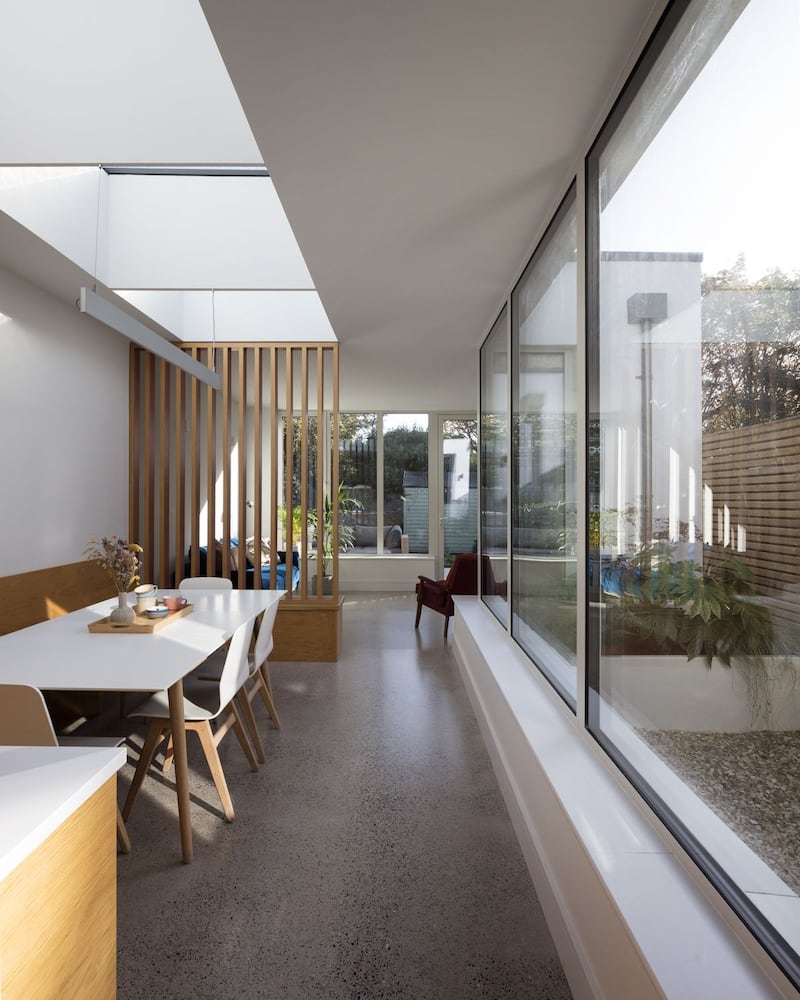
The little courtyard off the dining area makes full use of the sun as it travels from the back to the front of the house. “It lets in a lot more light and gives a great feeling of space,” O’Brien says. The terracotta is picked up in the timber fins which separate the dining area from the living area at the back of the house. “It’s these little details from Ciara that we would never have thought of,” says Greene. “But they work so well.”
Years ago, they bought an extendable BoConcept dining table for the home they hoped to have some day. But the size of their kitchen meant it could never be opened out. Now, it takes pride of place in the dining area. Their son recently had 10 friends over for a party and they fitted comfortably around the table.
[ How to retain character when renovating a period homeOpens in new window ]
“We spend so much more time in here now,” says Greene. “In the old house I had nowhere to sit, but I could sit here all day.” The floor-to-ceiling windows at the back of the house have opened the couple’s eyes to the biodiversity in their back garden. It may be a much smaller garden now but they say they enjoy it more. “When you sit in the living area you see so much more of the garden, and we were so surprised with all the birds and bees that come and go,” she says. “The big windows were a great idea.”
Meanwhile, the sittingroom at the front of the house gives the children room to play when their friends come over.
“Had we done this years ago, we would have made it all open plan because the kids were smaller. Now, since Covid, we both have blended working arrangements, and the kids want their own space, so I’m really glad we did the work now,” she says.
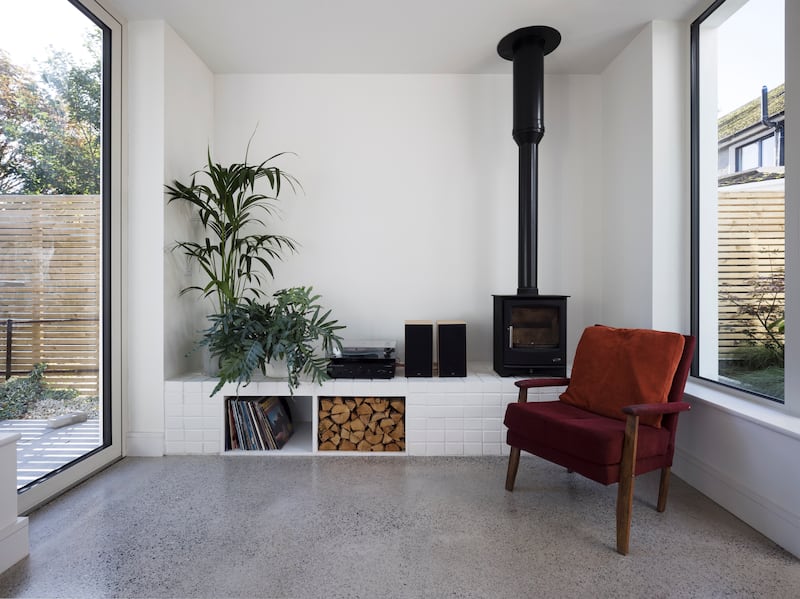
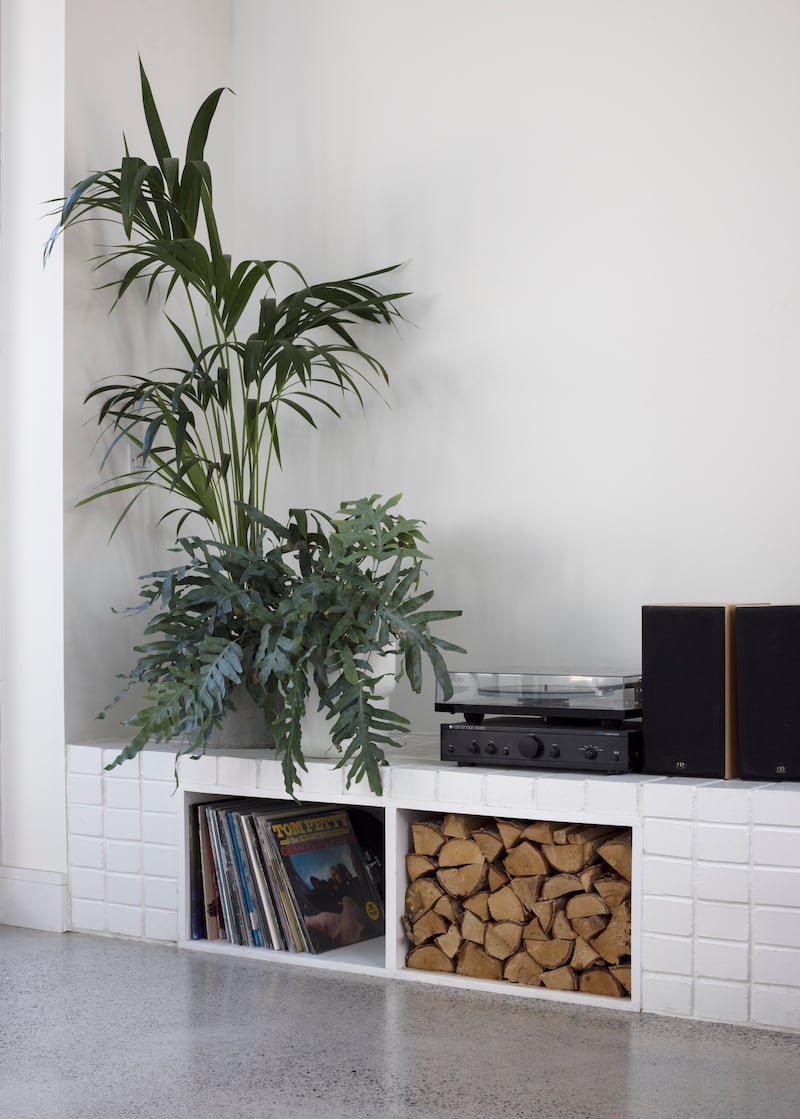
Renovating a terraced house poses challenges, particularly when builders are trying to get material and machines into the house. The family moved out when the renovation work started in May 2021 and moved back in during the first week of December. They say the whole process went very smoothly – well, as smoothly as things can go when you’re dealing with a pandemic, Brexit, and challenges sourcing building supplies and tradespeople. They were relieved that their architect project-managed the build. She had worked with their builder Ian Clarke Construction before and they say he was a great find. She had also pointed them towards their kitchen builder and carpenter Dermot Bracken, who worked miracles to maximise storage space.
“We wouldn’t have had those contacts or knowledge,” O’Brien says. “You hear these horror stories about building jobs, but we had no issues at all. Small delays here and there, but no big drama.” They kept within budget and didn’t get sidetracked mid-project with new plans. “Ciara really respected the budget throughout. I think it’s so important to get the right architect who will listen to you. It took a lot of the stress out of it,” Greene says.
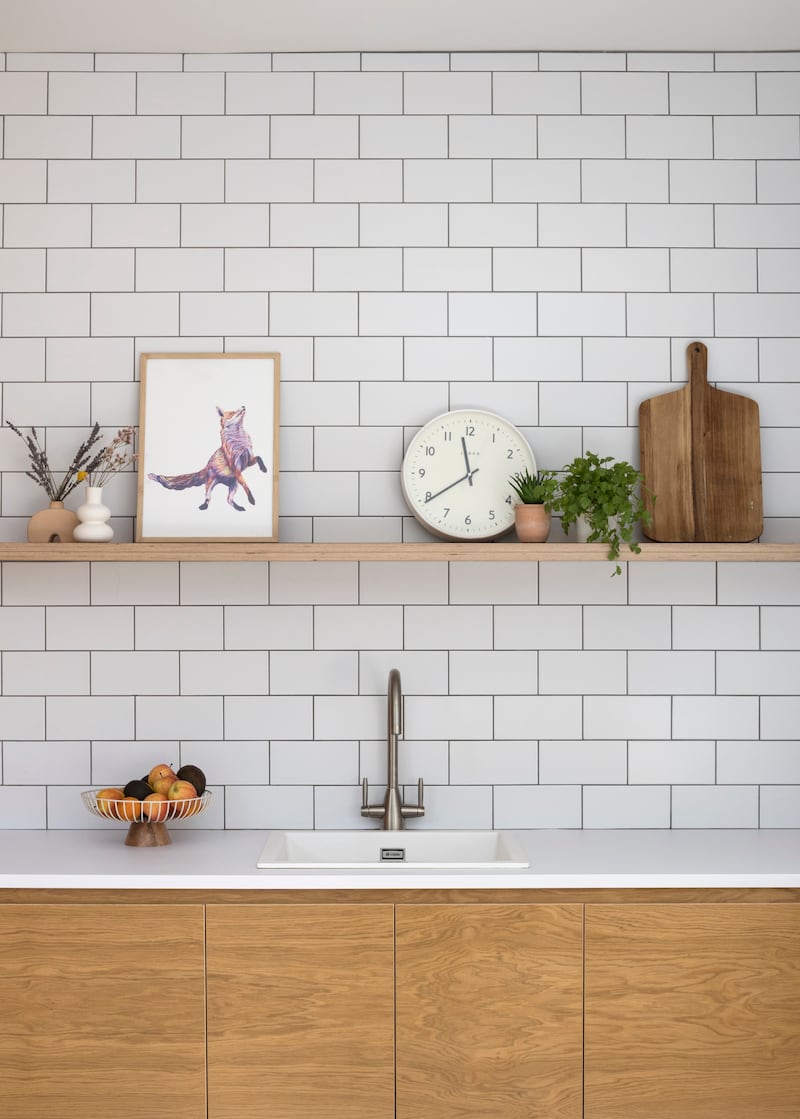
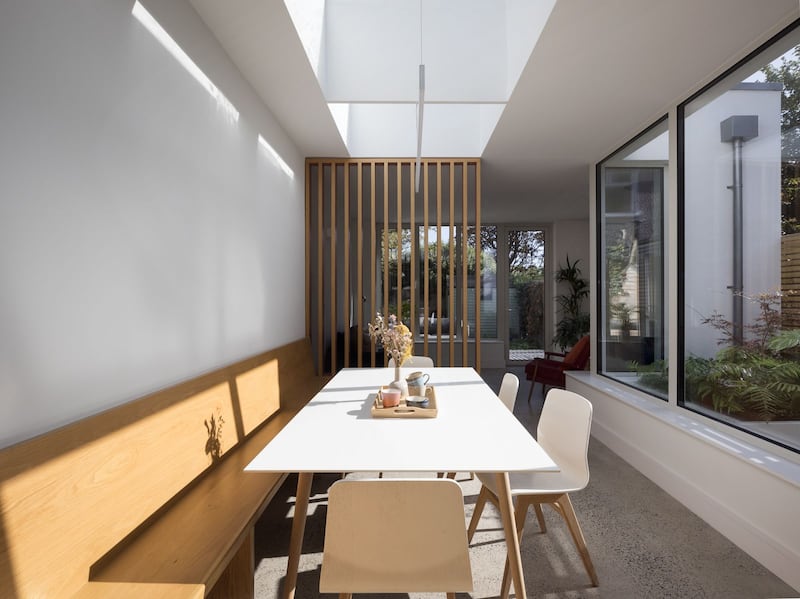
They still have to finish the front of the house, but they are happy that this little starter home has turned into a home for life. “This is where we’ll stay,” O’Brien says. “The area is great, the kids have friends and we have some lovely neighbours. You can walk anywhere. The school is in the estate and the park is beside us.”
Greene says she hopes their experience shows people the value of these old corporation houses. “They have so much potential because they are so well-built, but people so often write them off,” she says. “I’m so glad we didn’t.”
[ How to add a personal touch to a rented homeOpens in new window ]
Biggest win
“For me, it’s the kitchen,” says O’Brien. “I just love it all,” says Greene. “I’m so happy coming down the stairs in the morning.”
Biggest mistake
They struggle to come up with anything, but eventually agree that they did not need the overhead lights in the living and dining area. “We don’t use the main lights at all. The wall lights are enough because of all the natural light,” Stephen says. “It’s a good complaint to have.”

















